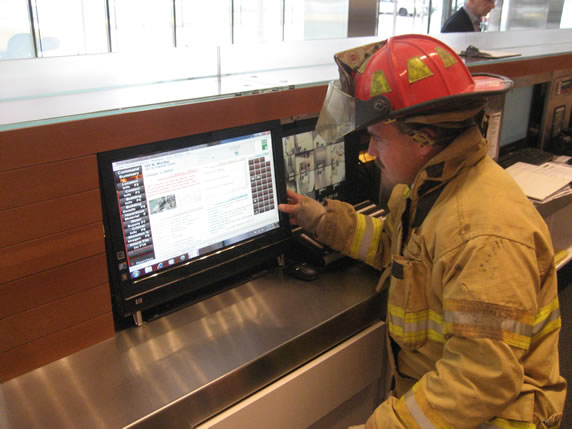
To assist first responders, a pre-plan should by easily accessible and include floor plans that identify shelter-in-place locations, persons with special needs, hazardous materials, and exits.
Excellent response to emergency situations is never an accident. In order to ensure first responders are in the best position to save lives and property, property managers should fulfill the crucial responsibility of pre-incident planning their facilities. The National Fire Protection Association (NFPA) has outlined pre-plan standards for fire departments to evaluate protection systems, building construction, contents and operating procedures. But fire departments can only track so many buildings, and they can’t recapture ever-changing data on a regular basis.
In recent years, more and more property owners and managers have leveraged available technology to monitor their investment, manage their employees, and communicate with marketing partners. But pre-plans, if developed at all, may be trapped in a paper binder, stuck in a file cabinet, abandoned on a shelf in the manager’s office, or inaccessible, along with many others, in the local fire station.
As the most important on-site point of contact in case of an emergency, the property manager should take proactive steps to play an active role in ensuring the first responders are informed. To do so, it is recommended to include these five key steps in pre-planning a building:
Share your information – The number one characteristic of an effective pre-plan is making it readily available to various groups. The easiest way to do that is by making it digital. This way you ensure first responders – both internal and external – have access to the latest building and occupant characteristics. New cloud-based solutions go beyond simple computer-aided drawings and allow for real-time updates that are accessible to first responders on scene or even en route to emergencies.
The director of facilities management and office operations at the San Francisco-based American Academy of Ophthalmologists (AAO) is Lou Cuneo, a former Atlanta firefighter of 25 years. “I learned in Atlanta that first responders don’t have time to hold street-level conversations with property managers and engineers,” says Cuneo. “If they could get us access to critical information in real time – if it can be accessible from my laptop in the street – it makes decision making so much faster.”
Think beyond fire – Property managers always should be hoping for the best, but prepare for the worst. And in doing so, managers need to think beyond fire. Consider the broadest range of emergency situations your occupants and visitors may face: floods, terrorism, hazmat, or even a simple broken pipe or power outage.
“The bigger picture is when the city of San Francisco is providing resources to respond and recover from large scale emergencies like earthquakes or even something far less catastrophic, they need all the help they can get,” says Cuneo. “At the same time, we would like to control our own destiny as much as possible.”
Think of everyone in the building – Who are your occupants? Who are the most vulnerable? Who are your regular and special needs visitors? Are there any disabled, sick, elderly, or children? A mixed-use building like the historic 680 North Lake Shore Drive building in Chicago – which occupies an entire city block and includes high end condominiums, office space, retailers, medical offices, and indoor parking – requires property managers to think broadly about who could be in the building at any given time.
“For first responders and off-site managers who are not immediately familiar with the building, being able to find detailed, specific and accurate information can save crucial minutes in an emergency situation,” said Tim Conway, 680 North Lake Shore Drive’s property manager.
Conduct drills – Put your pre-plan to the test. Communicate with local fire and police first responders to determine their availability to participate in varied situations and scenarios. These training sessions will highlight information gaps in drills and strengthen the ability to provide the right support to those putting their lives on the line.
Where’s the exit? – Ensure those in the building have an understanding of exit procedures and shelter-in-place locations, and make that information available to first responders so they have it upon dispatch and arrival at the incident. Make sure your pre-plan includes site plans and floor plans that visually identify where those shelter-in-place locations, persons with special needs, hazardous materials, and exits are located. This allows responders to act with the knowledge they need to save lives.
The NFPA reports a fire occurs in the United States every 23 seconds. Add to that other emergencies and first responders have their hands full. As much as we ask of them, it is every property manager/owner’s obligation to effectively minimize risk and make all tools available for use. These five steps will optimize your pre-plan. And making it all-digital will minimize the guesswork no matter who is first to respond.
David Howorka
David Howorka is executive vice president at Chicago-based RealView, LLC, developers of the all-digital CommandScope pre-planning technology. The program is available to both property owners/operators and first responders to expedite emergency response, saving lives and property. He can be contacted at [email protected].

